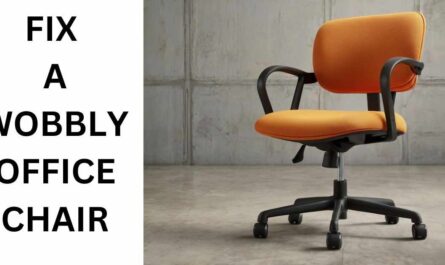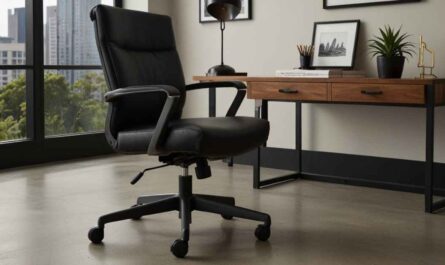We use office chairs and spend many hours on them in our daily lives, as they play an important role in our comfort, posture, and overall well-being. When we sit on the chair and our body aligns perfectly, then it significantly reduces the strain on our back and neck, which prevents long-term health issues, and enhances our work efficiency.
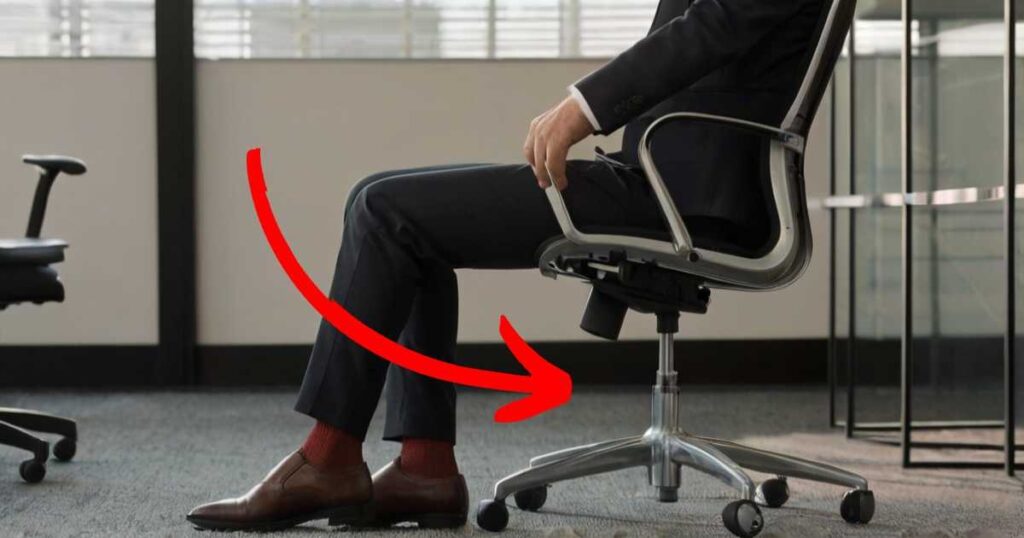
However, there is a common issue when an office chair starts to lean or tilting forward, which disrupts our seating experience and leads to discomfort and potential musculoskeletal problems. In this article, we will discuss properly how to fix an office chair that leans forward and you can also apply this procedure whether you have a different type like rocking, gaming, or computer chair.
Why does your Office chair Lean Forward?
There can be several reasons why your office chair starts leaning forward, in which a common issue is due to loosening bolts or screws that attach the seat to the base, and also it may be because of other reasons such as:
- Misalignment of the chair gas lift mechanism (the piston that adjusts the seat height)
- Worn out or damaged seat pan
- Uneven legs or casters
- Incorrect seat height adjustment
- Damaged or broken backrest support
How to find problems in your chair, that cause leaning forward?
It is important to identify the cause of your chair problem so you can easily fix this. Here we have listed a step-by-step guide to pinpoint the issues:
- Inspect bolts and screws: Start checking all the bolts and screws that connect the chair components and ensure they are tightened securely. This is a major reason so especially you should check those that are at the base of the seat and backrest.
- Examine the gas lift mechanism: The gas lift mechanism controls the height of your chair. If your office chair is leaning forward, then maybe it is due to misalignment or malfunction within this system. To check, gently sit on the chair and adjust the height. If it fails to remain at a set height or shows difficulty in height adjustment, then you need to repair or replace the gas lift cylinder.
- Check the seat pan: Inspect the seat pan and make sure there are no signs of wear or damage on it otherwise, it also needs to be replaced.
- Evaluate the legs and casters: To check the legs and casters, first place the chair upside down and examine if they are all evenly touching the ground. If not, then carefully adjust them according to the manufacturer’s instructions. Also, check if there are any signs of damage or unevenness on the casters.
- Test the seat height and adjustment: Make sure that your chair seat has a comfortable and proper height for sitting. Adjust it accordingly and test to see if it stays in place.
- Check the backrest support: The backrest of an office chair supports our upper body, and Inspect it if this support is damaged or broken.
What you will need?
With the right tools, fixing the forward-leaning chair problem is an easy task, So make sure you have gathered these before starting the process:
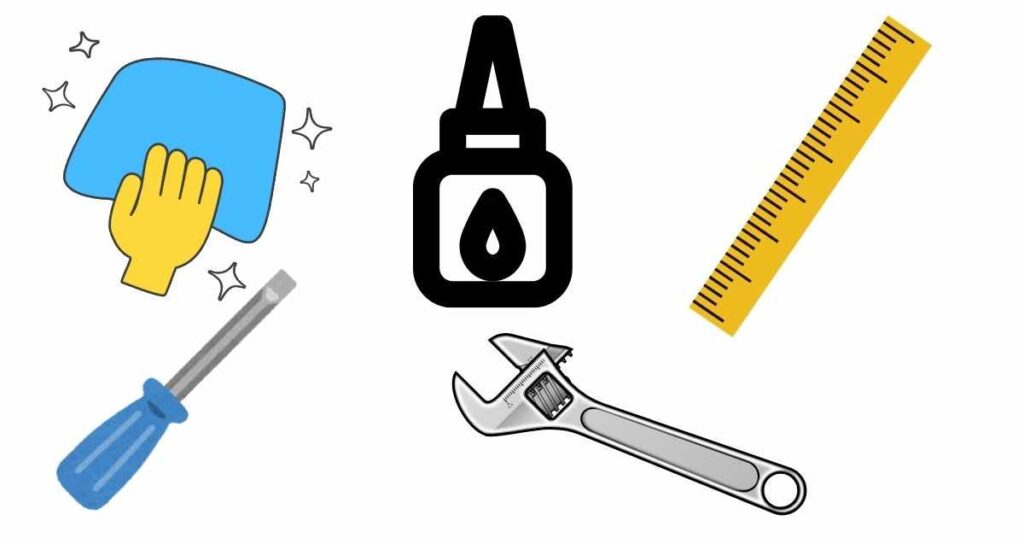
- Adjustable Wrench: To tighten or loosen the bolts and screw.
- Screwdriver Set: You will need a variety of screwdrivers to fit different sizes and types of screws on your chair.
- Lubricant (like WD-40): You can use any other lubricant that you want or WD-40 is best to smooth out any stiff mechanisms
- Replacement Parts (if necessary): As you learned the leaning forward reasons If any part of your chair is damaged and you see it needs to be replaced, then you must have the replacement part that you can buy online.
- Clean Cloth: Also gather a clean cloth to remove the dust or debris from the moving parts.
- Tape Measure: To check the symmetry of the chair’s components and ensure everything is even. This is especially important when adjusting the legs and casters.
How to Stop and Fix an Office Chair from Leaning Forward? Step-by-Step
Once you have identified the issues in your chair and gathered all the necessary materials, now fix your chair by following this step-by-step process:
1. Tighten All Bolts and Screws

After inspecting, the bolts and screws can loosen over time with regular use if you find any looseness that causes the chair to become unstable and lean forward. Use an adjustable wrench and a screwdriver set to tighten each bolt and screw.
Ensure you check under the seat, at the base of the backrest, and where the armrests attach to the chair body. Turn them clockwise until they are snug, but be careful not to overtighten them as this may strip the threads or damage the parts.
2. Adjust the Gas Lift Mechanism
If your office chair is still leaning forward, then maybe there is an issue with the gas lift mechanism. To adjust it, firstly use a clean cloth to remove any dirt or debris from the piston and lubricate it with WD-40 or you can use any similar, you want. Test the height adjustment by sitting on the chair and pressing down on the lever, making sure it stays in place without any difficulty.
Still, if your chair leans forward, you may need to replace the gas lift. Well, it is a simple process you just need a new gas lift of the same size and specifications as your old one. Simply unscrew the old gas lift by using an adjustable wrench and install the new one in its place.
3. Replace Damaged or Worn-Out Seat Pan
A damaged or worn-out seat pan can also cause the chair to lean forward. If you find any signs of wear or damage, then you need to replace it with a new one, You can purchase a replacement seat pan from the manufacturer or any office chair parts supplier store. And Simply:
- Turn the chair upside down and remove the bolts or screws that hold the seat pan in place.
- Remove the old seat pan by using a screwdriver to gently pry it off.
- Place the new seat pan in position and align it with the bolt holes.
- Secure it in place by tightening the bolts or screws.
4. Check and Adjust Seat Height
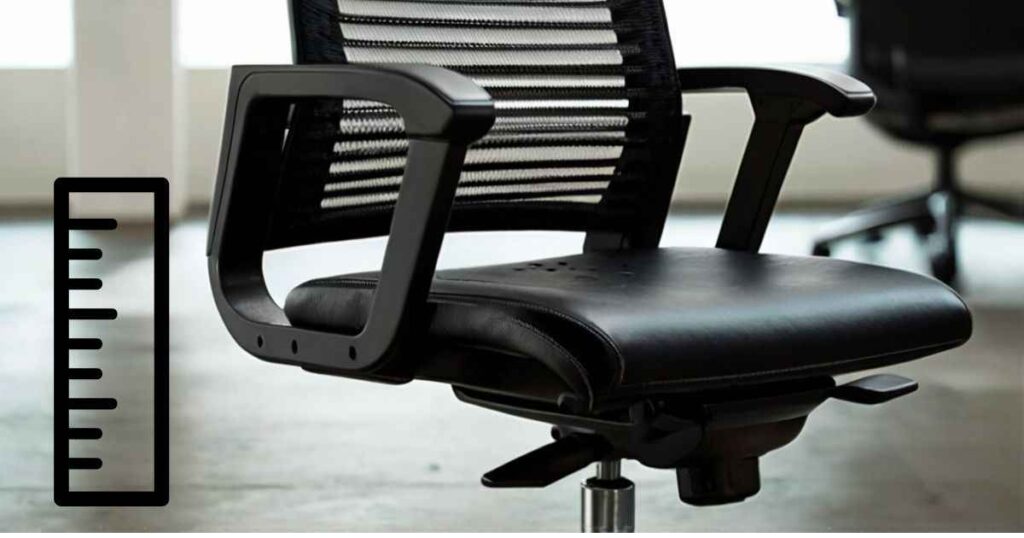
If your office chair has uneven legs or casters, and you have checked If they are touching the ground, then use a tape measure to check their length and adjust accordingly.
Follow the manufacturer’s instructions to adjust the legs and secure them in place by using a wrench or screwdriver. And if the casters are damaged then you will need to replace these.
- Remove the damaged caster with a screwdriver.
- Insert the new caster and use a wrench to tighten it securely.
- Also, test it to make sure that all casters are evenly touching the ground. if not, then repeat the process one more time.
- Clean the casters and lubricate them for smooth movement.
5. Test Backrest Support
If your backrest is damaged or broken, then you need to replace it. Purchase a replacement backrest from the manufacturer or any online store and follow:
- Turn the chair upside down and remove the bolts or screws that hold the backrest.
- Remove the old backrest by gently prying it off with a screwdriver.
- Place the new backrest in position and align it with the bolt holes.
- Secure it in place by tightening the bolts or screws, then test it once more to make sure make sure it is properly supported and doesn’t lean forward.
Also Read: How to Fix an Office Chair Leaning to One Side?
How to Keep Your Office Chair in Good Condition and avoid leaning forward issues?
After fixing the issues, it is important to learn and follow a care routine so your chair will be in good condition and you won’t face any problems for years to come.
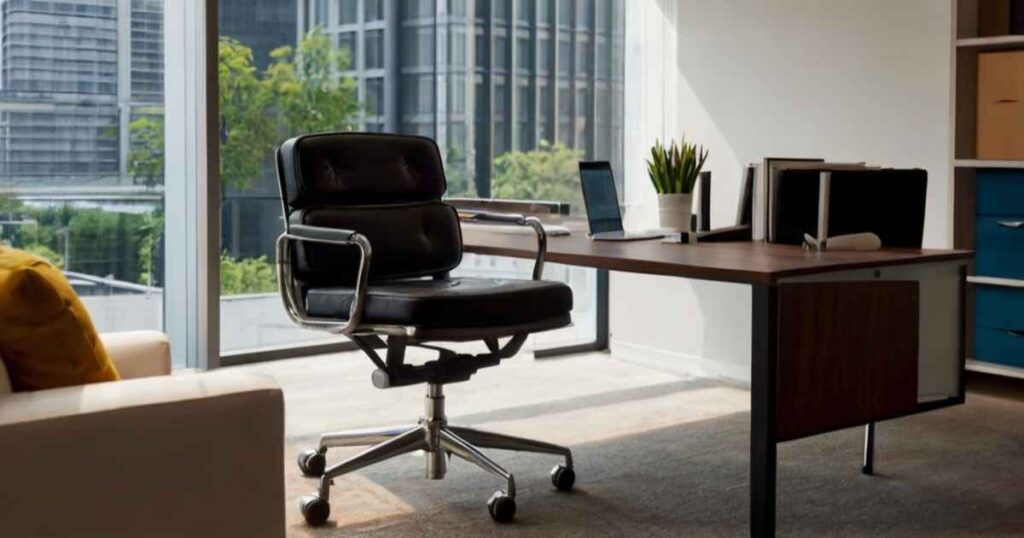
- Weekly Dusting and Wiping: Use a soft cloth to dust off the surface of your chair to avoid dust accumulation, especially on the moving parts and under the seat. Gently wipe the areas by dampening the cloth with a mild cleaning solution so the dust does not get trapped.
- Monthly Check on Screws and Bolts: With an adjustable wrench and screwdriver, inspect and tighten any loose screws and bolts. Remember, these can loosen over time due to regular use, which can cause instability and also lean forward.
- Quarterly Lubrication: It is also important to lubricant the moving parts, whenever you see any problem in your chair like with the lift mechanism and casters.
- Inspection for Wear and Tear: At least once a month, inspect your chair thoroughly for any signs of wear or damage such as a worn-out seat pan or damaged casters. If it needs replacement or any repair, then follow the above steps.
- Proper Use: Last but important is how you use your chair. It is important to avoid putting excessive weight, every office chair has a certain weight capacity, that is 200 to 300 pounds for a standard chair.
Following these simple tips, you can keep your office chair in good condition and prevent issues like leaning or tilting forward.
FAQs
Can I replace office chair parts myself or should I get professional help?
Ans: You can certainly replace most office chair parts by yourself, this is a DIY project, as many replacements, such as changing the seat pan, backrest, or casters replacements are easy to do, and they require basic tools like a screwdriver and wrench.
However, if there are more complex issues, especially those involving the gas lift mechanism, then you will need professional help to make sure the repairs are done safely and correctly.
How do you adjust the tilt on an office chair?
Ans: Adjusting the tilt on an office chair usually involves locating the tilt tension knob beneath the seat. This knob controls the resistance you feel when you lean back. Turn the knob clockwise to increase tension and make it harder to tilt back, or counter-clockwise to decrease tension for easier reclining.
Some chairs also have a tilt lock lever; pushing down on this lever will lock the chair in its current position while lifting it will allow you to move freely.
What is the most comfortable chair position to avoid leaning forward?
Ans: The most comfortable chair position to avoid leaning forward is one that supports a natural spine alignment and distributes weight evenly. Ensure these steps while sitting:
- Your feet are flat on the ground or on a footrest, with your knees at a 90-degree angle.
- Adjust the seat height so that your thighs are parallel to the floor.
- Your lower back should be supported by the chair’s lumbar support,
- And the seat depth should allow you to sit fully back in the chair without pressing against the backs of your knees.
- The armrests should be at a height where your shoulders are relaxed and your elbows are at a 90-degree angle, helping to prevent leaning forward.
Final Words
In the office chair, this is a common issue and you can identify the actual problem and fix your office chair that leans forward by following the steps outlined above. Also, you have learned that regularly maintaining and caring for that will help you prevent this issue from occurring and make your chair usable for the years to come. Remember to check for uneven legs or casters from time to time, and properly adjust seat height, and test backrest support, so it won’t disturb your office work.

